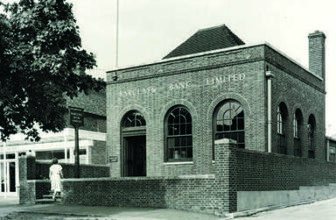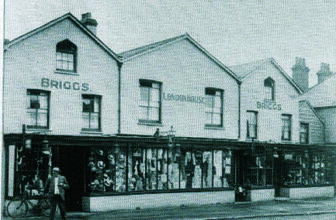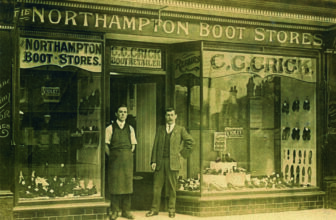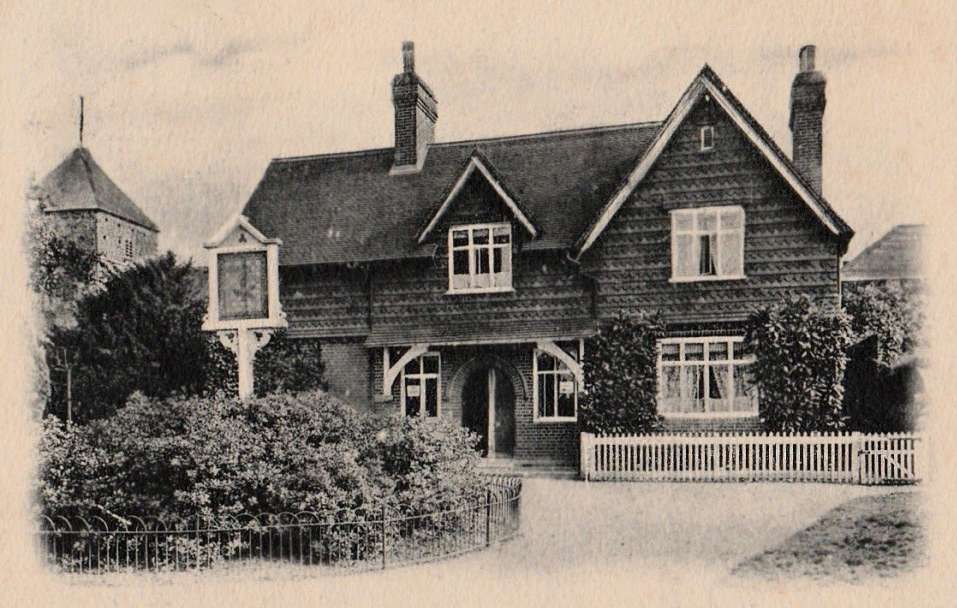
A postcard of the Lady Peek Institute, post-marked 1904, courtesy of Mrs Vera Wilkinson
The Gentleman’s Club
Sir Henry William Peek, Bart, a wealthy importer of tea and spices, and MP for Mid-Surrey, founded the Lady Peek Institute in 1885 in memory of his wife Margaret Maria, who had died the previous year. He also funded the building of Cranleigh School’s chapel and the rectory (now Moat Lodge). The Institute was built near to the parish church, on the other side of Church Lane, and close to the National School (now the Arts Centre). It is somewhat curious that Lady Peek should be commemorated by an exclusively men’s club. The intention was to provide a happy, sociable meeting-place where local young men could spend their leisure time, with healthy activities and without alcohol. In 1910 it was described as ‘a very prominent item in the list of attractions in the village’.
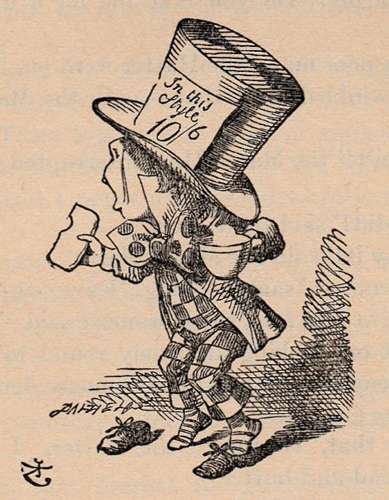
Half a guinea would also have bought the Mad Hatter’s hat (John Tenniel, 1865)
It seems to have been most active in the years before the First World War, although it continued until the 1950s. Open from 10.00am to 10.00pm daily, it had coffee, reading and billiard rooms, a library and bathrooms. Daily papers were available, ‘both sides of politics’ being represented. The Library had an ‘excellent collection’ of books. A resident couple acted as caretakers, and the club was served by an honorary secretary, a treasurer and a librarian – all public-spirited worthies of Cranleigh. The annual subscription was half a guinea (10s 6d).
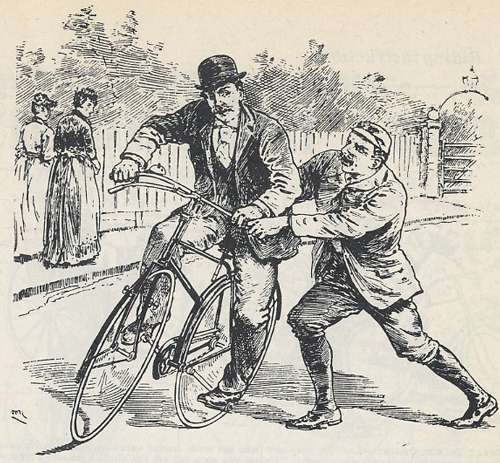
Learning to ride a safety bicycle in 1894
Several ‘Smoking Concerts’ were held in the 1890s to publicise what the Institute had to offer. One popular group was the Winterfold Handbell Ringers, who were ‘loudly applauded’.
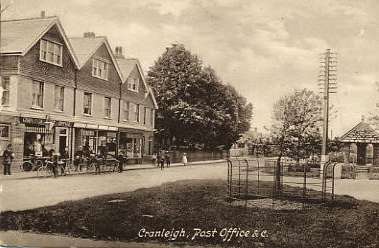
Plenty of bicycles outside the Post Office in about 1910 (card courtesy of Roy Pobgee)
In 1890 a cycling club was started in Cranleigh, with its headquarters at the Lady Peek Institute. The safety bicycle had been invented in 1885, and quickly became popular with Cranleigh’s labourers and apprentices, who could aspire to save up and buy one, and thereafter had undreamed-of freedom. Bicycles suddenly proliferated in photos of Cranleigh. The club’s early outings were to Ockley, Rudgwick and Dunsfold (hardly very adventurous), and nine members cycled to Guildford.
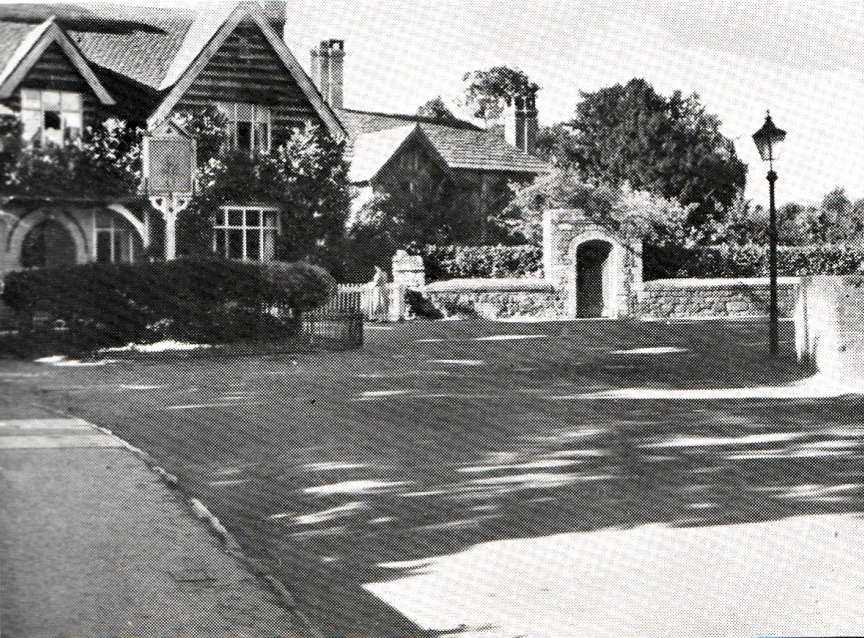
The Institute, with next-door Belwethers, by local photographer Bernard Grover, in the Cranleigh Guide of 1954
On one occasion, the Rector – the formidable Archdeacon John Sapte – entertained the choir boys to tea at the Institute. The account in the Parish Magazine says that ‘after a substantial meal, they adjourned to the Rectory meadow for football, Decani v. Cantoris [the two facing sides of the choir], and in spite of the warm weather they kept the game going for about an hour and a half, Cantoris being victorious by 2 goals to 1’.
During the winter of 1901, tournaments were held in billiards, draughts, chess, whist, ‘and also in ping-pong, which has recently been added to the attractions of the Institute’. In 1912, the prizes were game, coal, joints, clothing and confectionery, donated by the local gentry, farmers and shopkeepers. In 1913, the Institute was so popular that its principal room had to be enlarged so that two billiard tables could be accommodated.
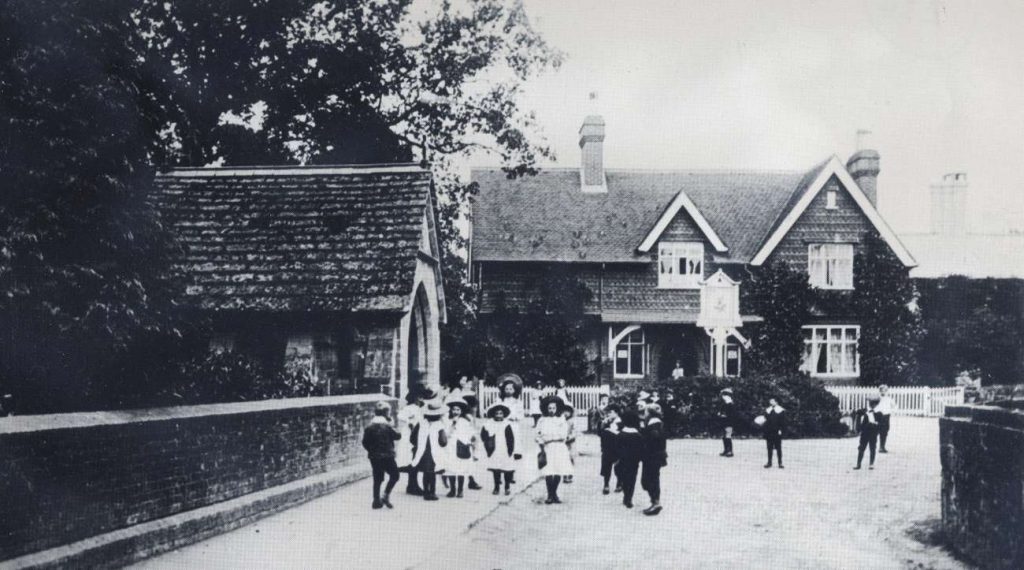
School children outside the Institute in 1904 (the school playground wall is on the right)
When necessary, inquests were held here. William Holden, 63, died after falling from a hayrick which he was building, on Parsonage Farm. Lottie Forehead, 16, a maid at Snoxhall (as it was then called), died after being severely burnt by the household stove in 1917. Both of these died in the Village Hospital.
The Lady Peek Institute closed in the 1950s, when its range of activities was found to be too limited. The absence of alcohol may also have been a factor.
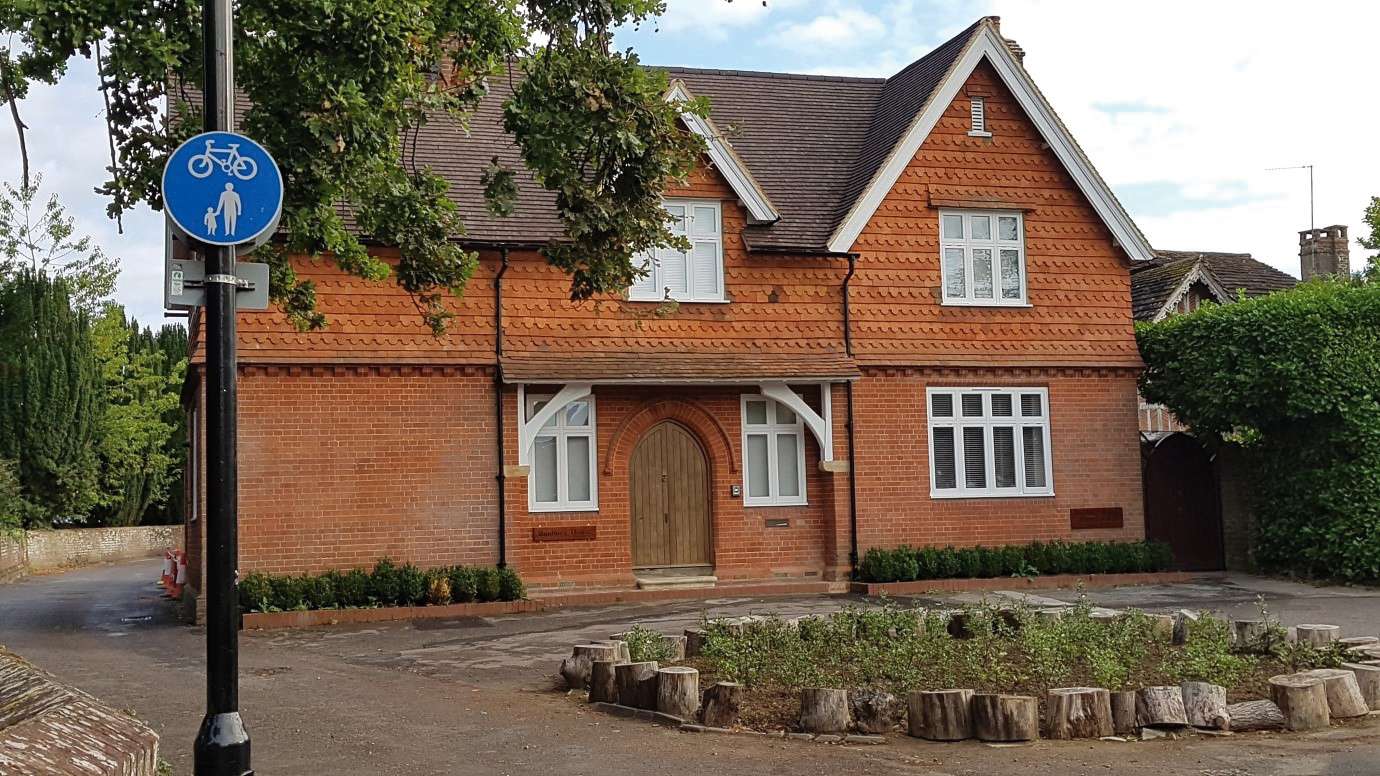
The Institute after redevelopment as Bunbury House, August 2019
Children who attended the Village School in the 1940s recall the homemade ‘lardy cakes’ that they could buy from the Institute caretakers for one half-penny apiece after school was over.
The Institute building was used for the County Library from 1959 to 1985. When the new library was built, the Institute became offices, with the name of Bullimore’s. It has recently been converted into five flats, called Bunbury House. I like to think this may be an allusion to the alias used by Mr Worthing in Oscar Wilde’s The Importance of Being Earnest: ‘I have invented an invaluable permanent invalid called Bunbury, in order that I may be able to go down into the country whenever I choose.’ There is probably a more prosaic explanation!
The Cranleigh History Society meets on the second Thursday of each month. The next meeting will be on Thursday March 12th and will be a guided walk around Shamley Green. Meet outside the Red Lion at 2.30pm.



